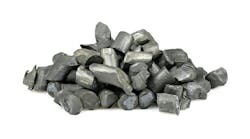The world almost seems "designed to destroy productivity and creativity," observes Daniel Goleman, a psychologist and author of the e-book, "The Brain and Emotional Intelligence: New Insights." That's because when employees are constantly interrupted by phone calls, e-mails and conversations, they are not operating in an environment conducive to creative thought.
The brain has limited capacity for attention, says Goleman. "The idea of multitasking from a cognitive science point of view is complete fiction," he says. We can't focus on two things at once. Instead, we switch back and forth. Each time we switch, we lose momentum. For example, when we interrupt what we are working on to read an e-mail, he says, it takes an average of 15 minutes to get back to where we were.
"To have the most creative moments, you need to allow people to have focused, uninterrupted time to work on a problem," says Goleman. He says employees need a "bubble," a protected time and place where they are where they are not distracted. During such periods, he explains, the brain takes information gleaned from a variety of sources and processes it, developing new connections and ideas. In these periods, scientists can observe a neurological sign, a "gamma spike," that signals a creative idea developed from different parts of the brain.
Managers should look for ways to encourage employees to structure their time so that they have an opportunity for this focused, creative time. He says they may want to encourage employees to take a hour each morning where "they don't look at their e-mail, they don't take phone calls, they just work on what is really important."
Goleman notes that organizations such as 3M and Google encourage employees to take time to pursue their own interests and focus on important projects. "That is the creative engine for those organizations," he notes. "That is when they are free to think and create."
Creativity occurs less often from someone having the "big idea" than from a multitude of small steps, says Goleman. He says everyone has the ability to contribute a creative insight or new way of doing things. By understanding this, he says, it moves creativity and innovation out of the "R&D silo and distributes it throughout the organization."



